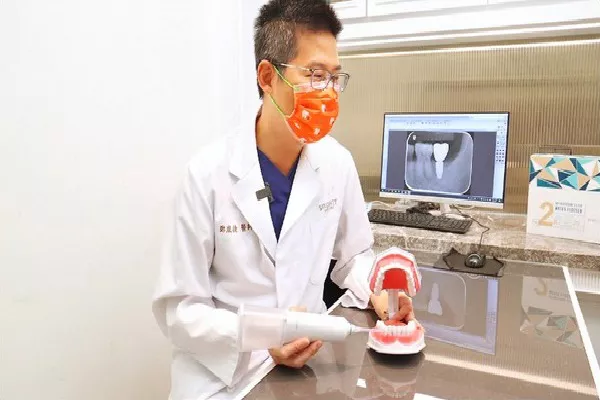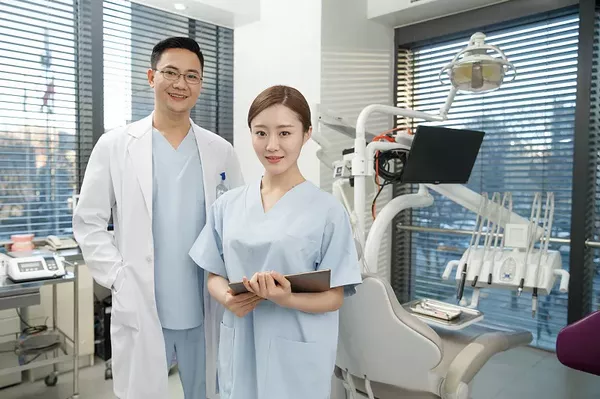In the rapidly evolving landscape of implant dentistry, success is no longer solely defined by implant survival but is intricately tied to long-term aesthetic and functional outcomes. The imperative for prosthetically driven implant placement, emphasizing optimal three-dimensional positioning for robust tissue support and stability, has propelled the significance of meticulous preparatory procedures such as socket preservation (SP) and guided bone regeneration (GBR).
Prosthetically Driven Implant Placement
In the contemporary paradigm of implant therapy, the emphasis on achieving not only implant survival but also enduring aesthetic and functional outcomes is paramount. The three-dimensional positioning of implants plays a pivotal role in providing optimal support and stability to the surrounding hard and soft tissues [1].
Socket Preservation (SP)
Termed as alveolar ridge preservation, SP encompasses procedures executed at the tooth extraction stage with the aim of minimizing external resorption of the alveolar ridge and fostering increased bone formation in the dental socket. Coined in 1982 as “bone maintenance,” SP is synonymous with terms like ridge preservation and socket grafting [2,4].
A consensus from 2011 outlines the objectives of SP, emphasizing its role in supporting residual hard and soft tissues, maintaining sufficient bone volume for optimal functional and aesthetic outcomes, and facilitating subsequent treatment procedures [5]. The method employs various bone grafting materials, barrier membranes, or their combinations. Notably, autologous platelet concentrates (APCs) have gained popularity in recent years for their role in guided bone regeneration and SP [6-9].
SP spans three categories based on the resorption rate of the material used, catering to different timelines and implantation scenarios. The choice of non-resorbable or slowly resorbable materials is dictated by the specific needs of the case [18].
Guided Bone Regeneration (GBR)
Unlike SP, which is executed at the tooth extraction stage, GBR involves procedures conducted before or during implant placement. This surgical intervention utilizes a barrier membrane to guide bone deposition and the growth of soft tissues at the surgical site [19,20].
The fundamental principles of GBR involve the use of barrier membranes in conjunction with bone grafting materials or substitutes, ensuring dimensional stability of the alveolar ridge. Allografts, xenografts, alloplastic materials, and autogenous bone are commonly employed biomaterials in GBR, with continuous efforts aimed at optimizing their mechanical and biological properties [21].
GBR operates on the concept of compartmentalization, as proposed by Melcher [25], aiming to prevent the migration of rapidly growing cells through the application of barrier membranes. Collagen, a natural resorbable material, is frequently utilized, with some considering the titanium-reinforced expanded PTFE membrane as the gold standard in GBR [26].
Review Methodology
The review conducted by Yankov involved an electronic search using Google Scholar, PubMed, and Scopus up to October 2023, adhering to the Preferred Reporting Items for Systematic Reviews and Meta-Analyses (PRISMA) guidelines. Articles in English, published between January 2018 and October 2023, were included, with specific keywords such as “guided bone regeneration,” “socket preservation,” and “dental implant placement.” The study rigorously compared and evaluated the indications, advantages, and limitations of SP and GBR, presenting a synthesis of current knowledge in this critical domain.
Results
The search identified 14,144 potentially relevant studies, with 15 articles meeting the inclusion criteria after meticulous screening and evaluation. The PRISMA flow diagram, depicted in Figure 1, succinctly outlines the rigorous selection process.
In conclusion, Yankov’s review underscores the pivotal role of SP and GBR as indispensable prerequisites for successful implant dentistry. Through a meticulous exploration of their indications, advantages, and limitations, the study not only contributes to the existing body of knowledge but also provides valuable insights for future research in this evolving field.





























